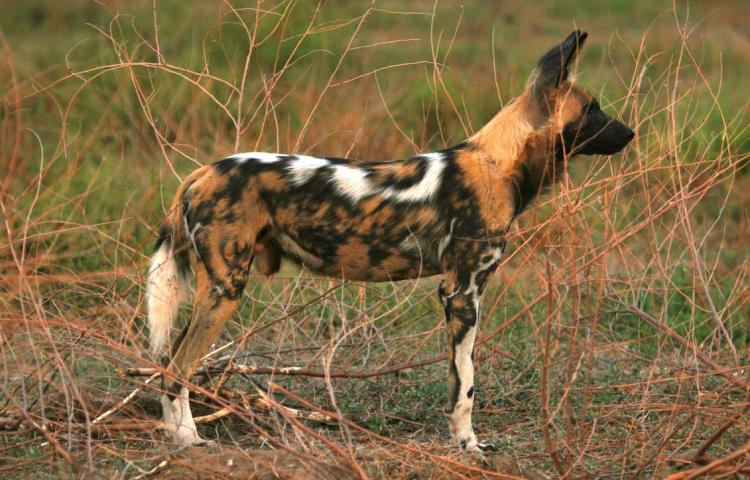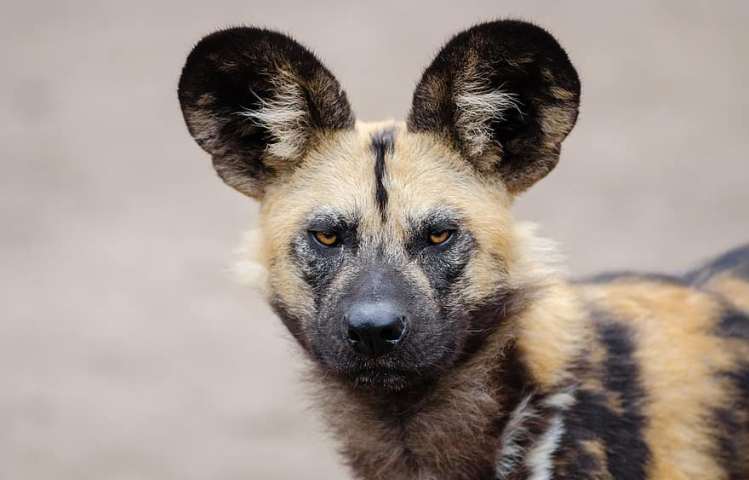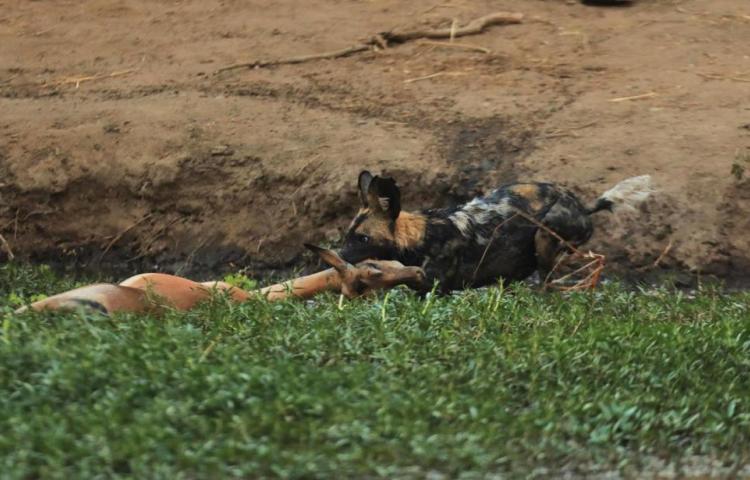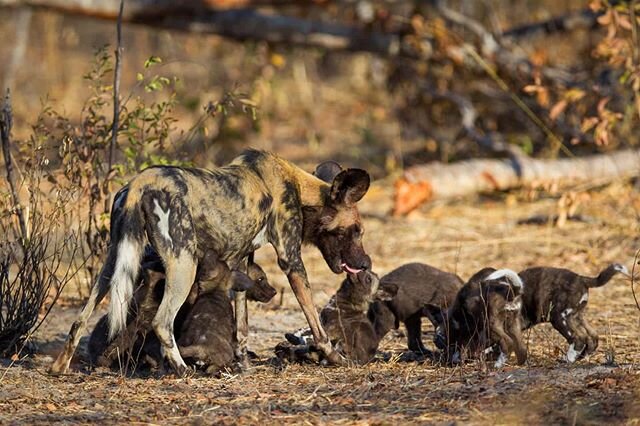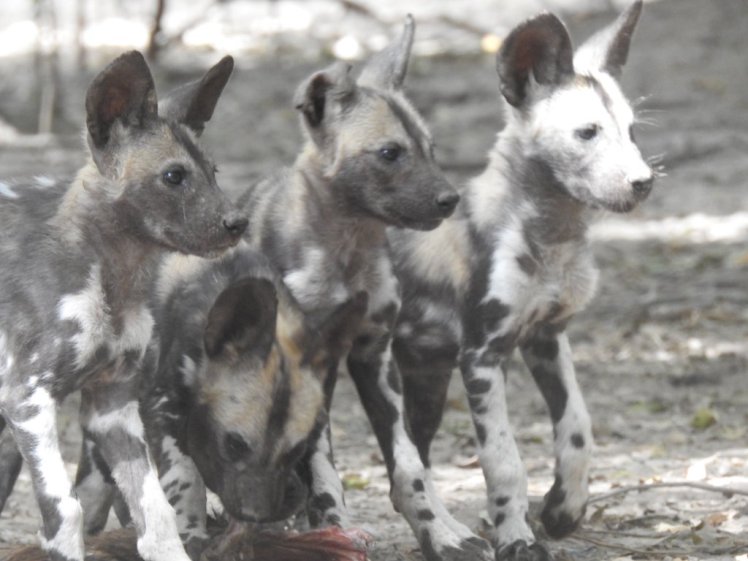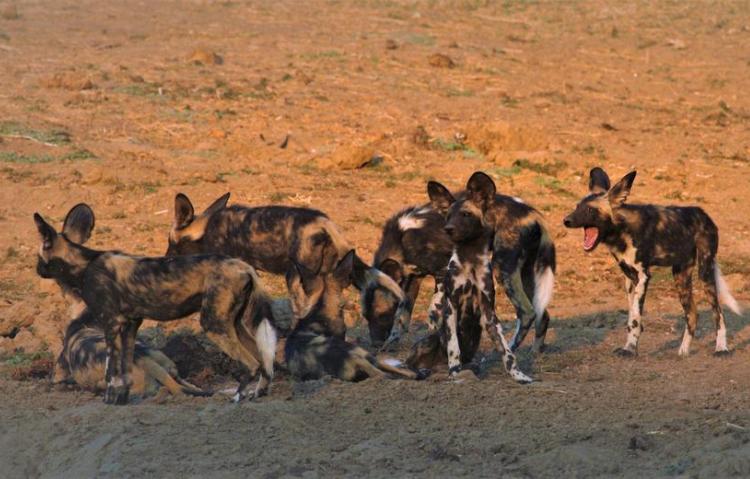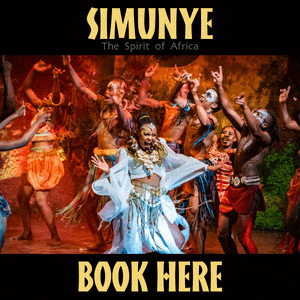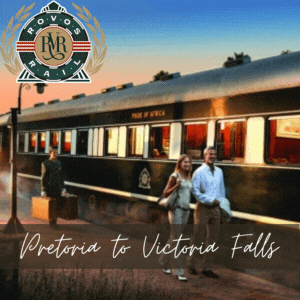African Wild DogCorrectly known as the African Painted Dog but also known as Cape Hunting Dog, African Hunting Dog, Painted Wolf or originally as the African Wild Dog. These hugely underrated animals are Africa's equivalent of the Wolf of Northern America and Europe.
African Wild Dog (photo: Flo Coughlan) Quick Facts about African Wild Dog
Latin name for wild dog: Lycaon pictus
African Wild Dog The African Wild Dog FamilyThe evolutionary tree is still poorly understood. They are part of the Canidae family, but much more distantly related to the domestic dog than once thought. The Grey Wolf are the domestic dogs closest living relative. One of the biggest determinations is the loss of the first digit (toe) of the front foot, also known as the dew claw. This adaptation helps increase stride length and speed and allows painted dogs to pursue prey through the open savanna over vast distances. What is the African Wild Dog Status and Distribution?These incredible animals are one of the world's most endangered large carnivores, previously at over 500 000 strong the population is currently less than 6000 surviving in the wild. Once ranging across most of Sub-Saharan Africa, they are now confined to small pockets of protected areas. There are many reasons for their dramatic decline, but their biggest concerns are disease, habitat loss and habitat fragmentation. Having such large home ranges these animals often move in between protected national parks and reserves on to agricultural land where they are heavily persecuted by farmers protecting their livestock. These areas block animals moving between different reserves and different packs effectively dwindling the gene pool to a handful of breeding individuals. Inbreeding amongst isolated populations then leads to disease and illness. What is the African Wild Dog Hunting Strategy?Famed for being one of the most efficient hunters in Africa, painted dogs are incredibly successful, boasting a kill rate of up to 80%, compare that with lions kill rate of only around 40%. These sleek, streamline creatures are diurnal pack hunters built for endurance. Long legs, thin body, large nostrils and large heart and lungs- their tactic is to run their prey to exhaustion. Working as a formidable unit the dogs search their range for any medium to large-sized antelope, impala and kudu being their favourite prey.
Wild dog with kill at Kavinga Camp in Mana Pools (photo: Kavinga Safari Camp) Once there is a target in sight, they will, as a pack move slowly towards it. Heads lowered and ears pinned back- their aim is to spook their prey into running and isolate an individual, from here the chase is on. The painted dogs have a distinct advantage, although often not as fast as their prey, their stamina is unrivalled. A lead dog will push the quarry hard. Keeping up an incredible pace after a few kilometres he will tire and the next dog will take up the lead. In this way the prey never has a chance to slow or rest. What is the African Wild Dog Social Structure?Unbelievably social animals, painted dogs live in an alpha run society. With a distinct hierarchy between males and females. Only the alpha male and alpha female will breed, holding the record among canines to have the largest litters, up to 16 pups at a time. If any of the other females in the pack breed there would be too many young mouths to feed and the infant survival rate would drop.
Wild dog with pups in Hwange National Park (photo: PDC) The whole pack cares for the pups as if they were their own, protecting and feeding them, in this way the pups have a greater chance of making it to adulthood. Food is brought back to the den and regurgitated for the pups, this is an incredibly vocal activity with pups nipping and licking the adult's mouth as a prompt to regurgitate meat.
Wild dog pups in Mana Pools National Park (PDC) This interaction strengthens the bonds between pack members. Extremely tactile each painted dog loves to be in contact with the next, often resting or sleeping on top of each other. Unique among the large carnivores in that the males will stay with their natal pack, while females will leave in search of a new pack and mating opportunities. The ratio between male and female animals is very unbalanced with many more males being born and surviving into adulthood. Hugely underestimated African wild dogs or painted dogs as they correctly named are amazingly sophisticated and social animals. Many people that are often on the bucket list of many seasoned safari goers.
Wild dog pack in Mana Pools (Ingwe Pan) Do African Wild Dog Occur in Victoria Falls?As mentioned earlier these carnivores are very much on the endangered list of wild animals. However, the national parks close to Victoria Falls do have reasonable populations of these animals and it is not that uncommon to see them. Zambezi National Park, Hwange National Park and Chobe National Park all offer opportunities to spot these animals. The road that links Victoria Falls to Chobe National Park, where guest often do day-trips, is called the Kazungula road and this road cuts through the Zambezi National Park. Wild dogs are often spotted on this road much to the delight of the guests. Sadly, the road is also their nemesis as they are sometimes killed by vehicles travelling too fast especially in the early morning or late afternoon when they are hunting. If you are thinking about an African safari please
contact us to help your plan your perfect holiday. With our intimate local knowledge we can ensure that you get exactly what you are looking for.
|
|
||
|
|
|||
|
|
|||
|
| |||
